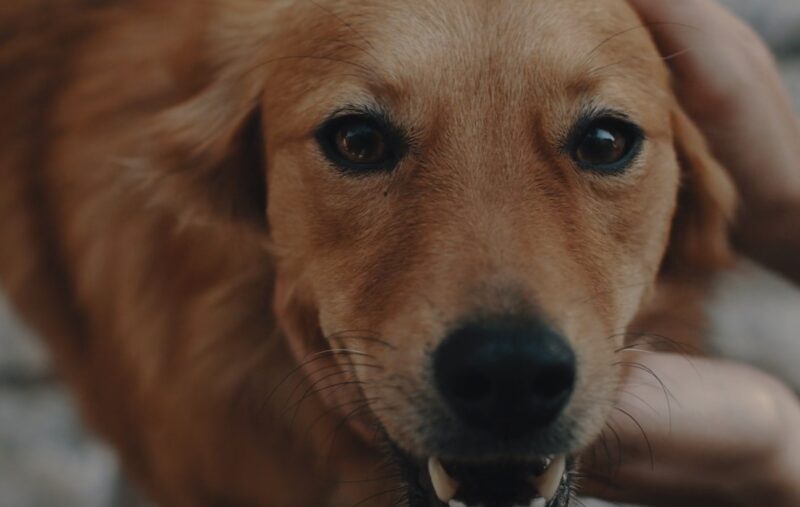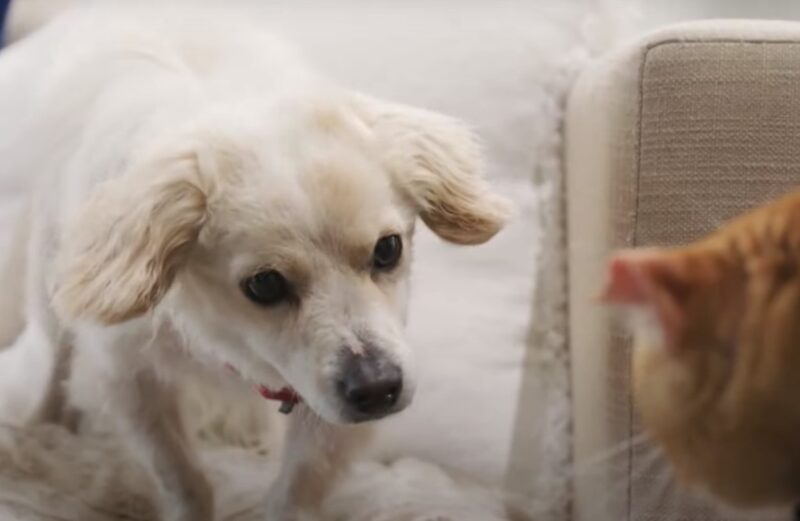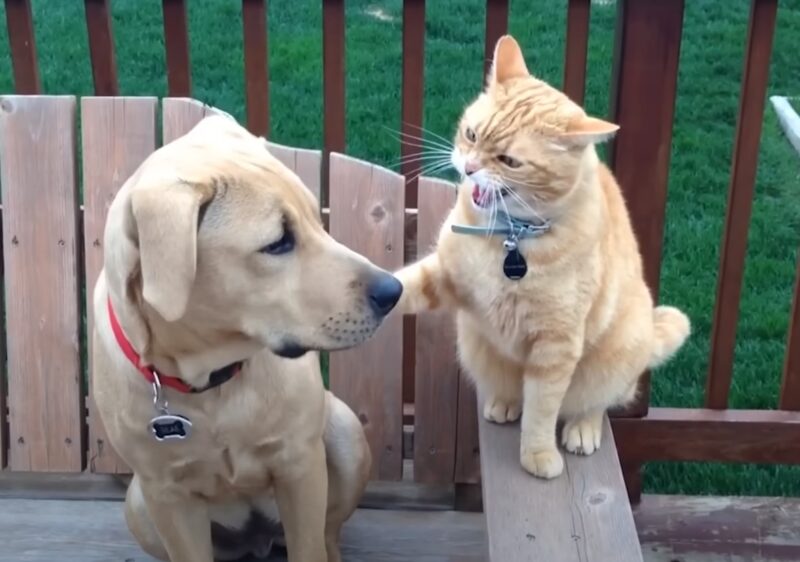Owners of dogs and cats that live together know that the old adage “Fighting like cats and dogs,” usually isn’t true—but sometimes it is.
If you’re a dog owner and you’re looking to introduce a cat into your home—or vice-a-versa—there are a number of steps you can take to stop problems before they start.
Sometimes, however, the problems already exist. Don’t fret—there are techniques for getting the two combatants to love one or another, or at least tolerate each other.
Before learning how to create peace between cats and dogs, it’s important to appreciate their differences as species, and how those differences affected their evolution into domesticated animals. Knowing this will help you better understand the dynamics at play between the two species.
Evolution of Dogs

Dogs evolved from wolves in a long and complicated process, which you can learn about in this article. Link to article about wolves-to-dogs] In short, wolves are pack animals, and each pack has its leaders—the alpha male and alpha female. They make all the decisions. The other wolves defer to the alphas and seek their approval.
Modern domesticated dogs still display that characteristic. Most dogs want to stay on the good side of their pack leader—you—and that’s why they want to please you (they like getting rewards, too!). This desire to please is the primary reason dogs are trainable.
Evolution of Cats

Cat’s couldn’t care less about pleasing you (there are exceptions to the rule). That’s why it’s difficult to train a cat. But why are cats like that?
Cats evolved from African wild cats, which are solitary hunters. Archaeologists and scientists believed cats became domesticated in ancient Egypt. This was a time when people began farming and living sedentary lives. The food and garbage produced by humans attracted pests like rats and mice. Cats followed the pests, and the humans were happy to let the cats perform pest control. Over time cats lost their fear of us, and we became beguiled by them.
What this means for you is that when introducing the two species, most of the onus is on the dog, because dogs can be trained to behave well around cats.
Introductions

One of the best ways to preempt potential problems between your dog and cat is to make proper introductions.
NOTE: Introductions and subsequent peaceful relations are easier if one of the animals is a puppy or kitten. That’s because young animals adjust easier to new things, since almost everything is new.
NOTE: If you got your dog from a rescue center, make sure to find out how it behaves around cats.
The first step—whether you’re bringing home a dog or cat—is to prepare for the introduction.
- Initially, the two must be separated. Make sure to give each its own room or part of the house.
- Alternate rooms so they can get acquainted with the other’s scent.
- Let them smell each other under the door that divides them. When they both seem relaxed and ready—hopefully even curious—it’s time to make the introduction.
- If you already have a dog, make sure she’s leashed, trained and listens to commands. If you have a puppy, make sure she’s leashed and calm before the introduction. Untrained puppies are playful, curious and hyper. A cat might get frightened and lash out. You don’t want your puppy to get scratched on her nose, or your cat to be frightened.
- If you’re introducing a cat or kitten who doesn’t mind being held, hold him so he’ll feel more secure. Then, slowly bring the him closer to your dog. Do not let them make physical contact. You’re letting them get used to each other’s presence. You can also crate the cat as you bring your leashed dog closer.
- The initial introduction is stressful, so keep it short. Gradually increase the lengths of sessions.
- Once the cat seems comfortable, you can try letting them be in the same room. Remember to keep your dog leashed. After a few hangout sessions you can remove the leash.
- Show them equal amounts of love, because pets can get jealous.
Adjusting to life together
Once the two are getting along, continue to supervise their interactions. Also:
- Never leave them in the same room when you’re not home.
- Redirect your dog’s negative behaviors, such as barking at the cat, chasing him or playing too rough.
- If your dog is a puppy and won’t leave the cat alone, give her another activity to divert her attention. Obedience training, whether there’s a cat in your home or not, is always a good idea.
- Try to avoid scolding your dog when she’s exhibiting bad behavior toward the cat. You want the situation to be positive so that she’ll have positive associations with the cat in the future.
- Reward and praise your dog when she behaves appropriately near the cat.
- Give the cat a place where it can get away from the dog, such as a cat tree.
- Be patient. It might take a long time for the two to get used to each other.
Are they fighting or playing?

Sometimes it’s difficult to tell if dogs and cats are fighting or playing, or if the play has gotten too rough. Here are some of the signs to look for, according to PetSafe.net.
Playing
- Dogs will use exaggerated postures, like bowing.
- Cats will use the “elevator-butt” pose before pouncing, or swiping at the dog’s waiving tail.
- The dog or cat might pretend to be subordinate to invite play.
- Cats often roll onto their back to entice dogs to play. Sometimes dogs do it, too.
- Both “bite” with open mouths so as not to cause harm. They do not bat or paw with too much force.
- Both animals make minimal sound while playing.
Fighting
- One pet tries to run away from the other.
- A cat’s ear’s lay flat toward either side of his head
- A cat arches his back or his hair stands up.
- The cat is batting at the dog with its claws extended and coupled with aggressive postures.
- They bite too hard, causing yelps or cat screams.
- The cat is hissing, spitting or emitting a guttural moan/growl
- The dog growls in a prolonged low pitch.
- The dog snarls and bares its teeth.
FAQ
How long should the initial introduction phase between a dog and cat last?
The initial introduction phase can vary, typically lasting a few days to a week, depending on the animals’ comfort levels.
Can certain breeds of dogs coexist more peacefully with cats?
Yes, some dog breeds are known to be more cat-friendly due to their temperament, such as Golden Retrievers, Labradors, and Beagles.
Should cats and dogs have separate feeding areas?
Yes, it’s advisable to feed them in separate areas to prevent food aggression or competition.
How can I tell if my cat is stressed by the presence of a new dog?
Signs of stress in cats include hiding more than usual, changes in eating habits, and excessive grooming.
Is it safe to leave my dog and cat together unsupervised after they seem to get along?
It’s better to wait until you’re absolutely sure they’re comfortable with each other, which could take several weeks or even months.
Can senior pets adapt to living with another species?
It’s possible, but older pets might have a harder time adjusting. It’s important to consider their personality and health condition.
Conclusion
There aren’t many things more heartwarming for pet owners than to see their cats and dogs living together in harmony. It can also be extremely entertaining for you and your pets!
Do you have cats and dogs that live together? What have you done, if anything, to help them get along?
